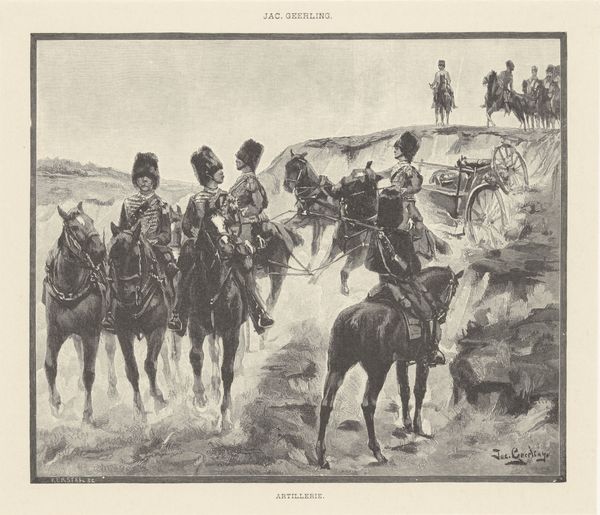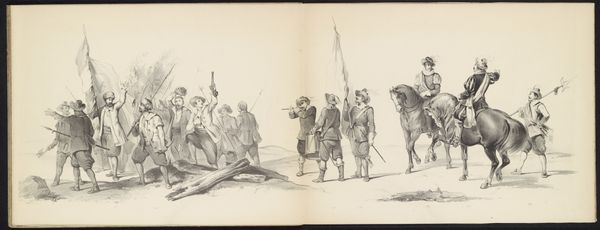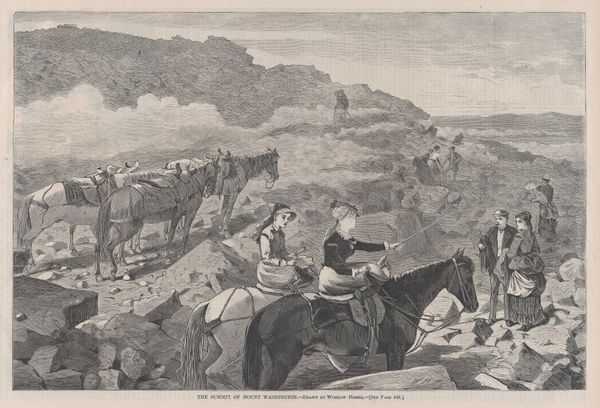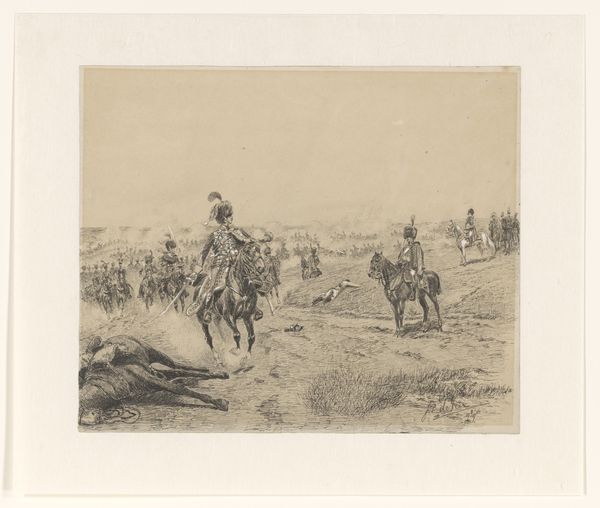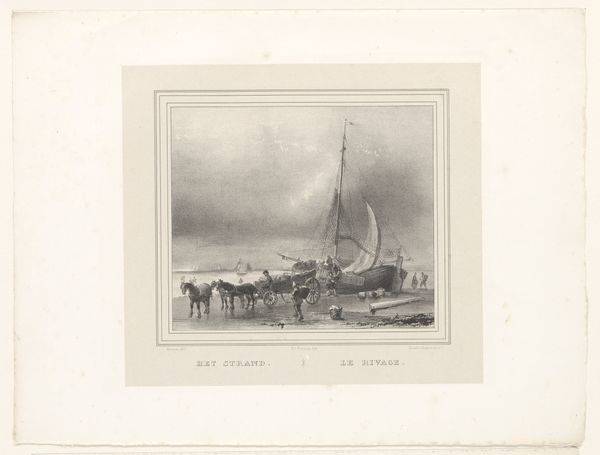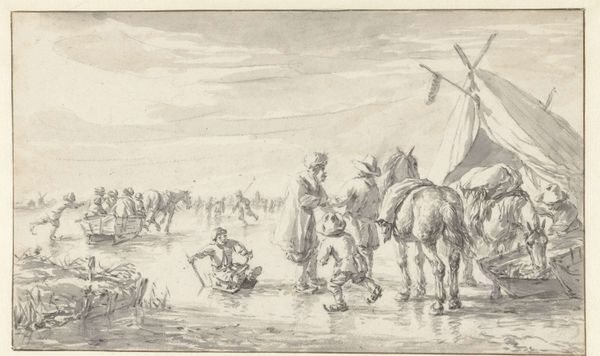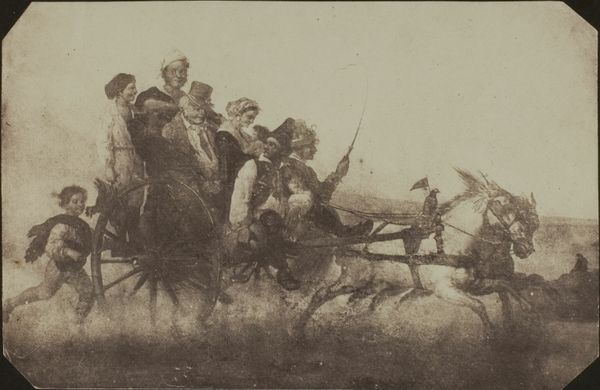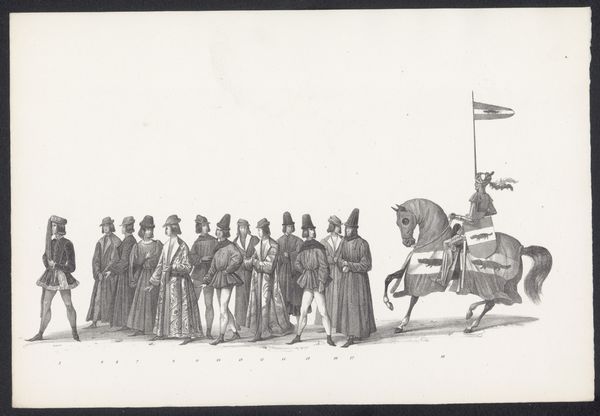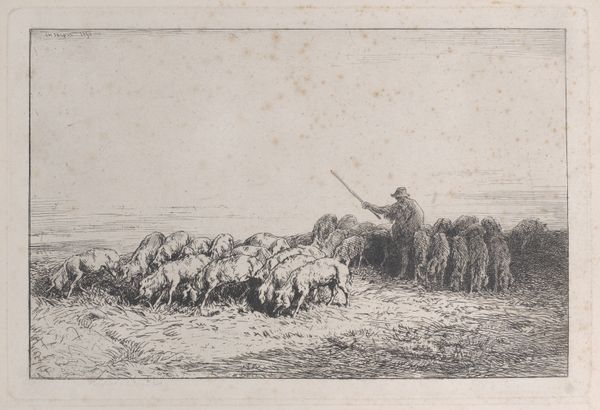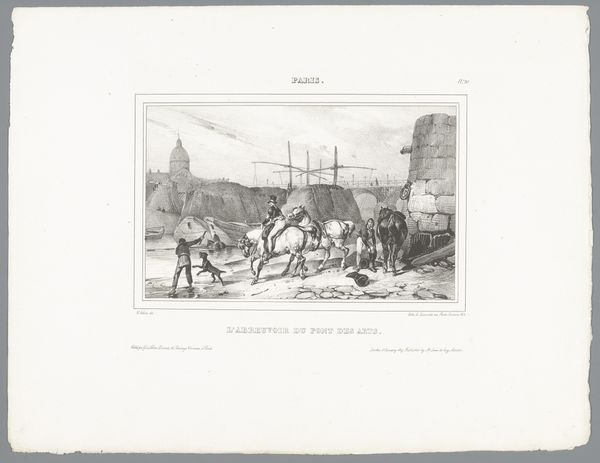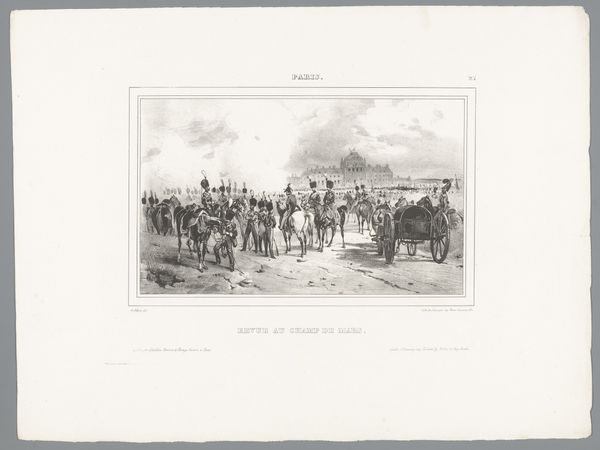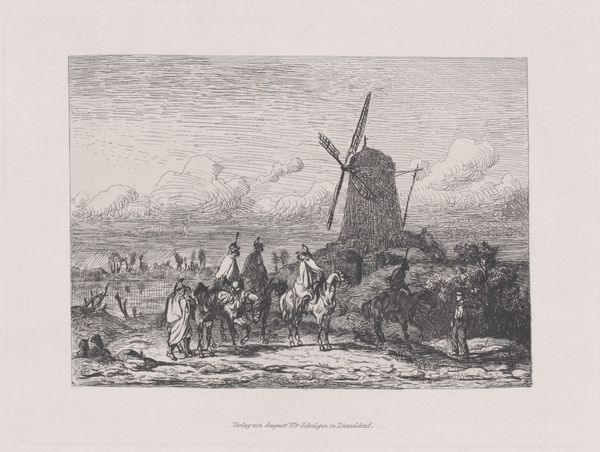
print, engraving
#
dutch-golden-age
# print
#
old engraving style
#
landscape
#
horse
#
genre-painting
#
engraving
#
realism
Dimensions: height 202 mm, width 273 mm
Copyright: Rijks Museum: Open Domain
Curator: Welcome. We are looking at "Paarden op het strand," which translates to "Horses on the Beach." It's an engraving, placing it within the broader context of 19th-century printmaking. The work is housed here at the Rijksmuseum, dating somewhere between 1869 and 1904 and attributed to Theodorus Henricus Kerstel. Editor: It feels incredibly…stark. The grayscale really strips it down to its essence. I get this overwhelming sense of labor, of struggle against the elements. Like these horses and men are just tiny cogs in a much larger, indifferent machine of the sea. Curator: That somber mood resonates throughout the piece. Observe how Kerstel employs a limited tonal range to emphasize the planar recession. The artist guides us into the scene through careful manipulation of light and shadow—a key aspect of formal realism. Editor: True, there is a quiet kind of mastery in the way it's constructed. I can almost smell the salty air. But thinking about the actual backbreaking work of those horses, all that constant strain and the inevitability that it never ends… it makes you want to cry out a little. Curator: Note, though, the structural importance of the fishing boat in the composition. It anchors the whole scene. See how Kerstel uses it as a vertical counterpoint to the horizontal expanse of the beach? That dialectic of the vertical against the horizontal produces a harmonious spatial tension. Editor: I’d rather focus on those poor beasts. Their powerful muscles straining. Each line etched into the print seems to capture the weight of their burden. I wonder if Kerstel ever rode one of these magnificent horses, to really understand their pain. Curator: Whether the subject is suffering or triumph is only an anecdote. We must consider the formal aspects such as Kerstel's attention to line and texture. Observe how the parallel lines create a subtle shimmering effect on the wet sand… Editor: For me, it's less about technicalities. There's a sad truth in it—a meditation on perseverance amid bleak circumstances. It leaves a lasting impression of our place, of people's struggles with nature, and I guess, our brief fleeting time on this shore. Curator: Very poetic, but it’s also an exercise in restrained artistry. The medium speaks for itself—quiet and understated. A piece that repays close viewing. Editor: Absolutely. There's something haunting and lovely about how Kerstel captured that transient moment of relentless toil.
Comments
No comments
Be the first to comment and join the conversation on the ultimate creative platform.
